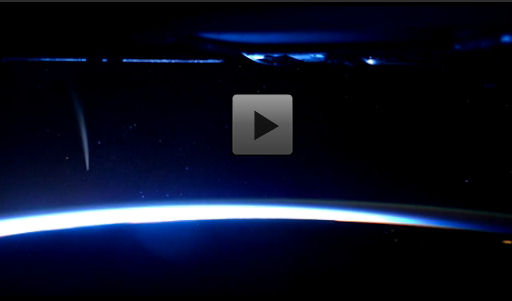Comet Lovejoy from Orbit
Currently serving onboard the International Space Station, Burbank photographed the sungrazing comet on Dec. 21st, an experience he describes in this NASA video:
Burbank describes the tail of Comet Lovejoy as a "green glowing arc at least 10 degrees long." He saw it just before orbital sunrise emerging from Earth's limb, which was "lit up as a bright sliver of blue and purple."
After plunging through the sun's atmosphere only 120,000 km above the stellar surface on Dec. 16th, and improbably surviving, Comet Lovejoy has become the finest comet since Comet McNaught in 2007. Its orbit is carrying it through the skies of the southern hemisphere where sunrise sky watchers are seeing the comet almost as clearly as Burbank did. One wonders if Burbank was looking out the window on Dec. 24th when Carlos Caccia took this picture of the ISS transiting Lovejoy's tail over Intendente Alvear, Argentina:
"The ISS passed through the Southern Cross, continued parallel to the Milky Way, and finally arrived at the tail of Lovejoy with its typical golden color," says Caccia. "What a lucky shot!"
The visibility of Comet Lovejoy should continue to improve in he mornings ahead as the comet moves away from the sun into the darker skies before dawn.


